
STEADY GROWTH
The year 2018-2019 was a growth oriented year for the UPS
industry.
Some companies grew while others failed to do so. Maintaining nearly the
same growth as last year.
The industry netted revenues to the tune of INR 6730.54 crore. This
is exclusively the end-user sales figure. However the over all industry
revenue was stimated at INR 6980.54 crore approx.
The reason why the total industry revenue is much higher then the
actual end-user sales is because many a companies procure finished
products from others & brand them as theirs, and our survey team gets
the turnover from both, resulting in duplication. With nearly 304
companies responding to our survey, giving us the information we
sought
in great detail, knowing fully well how much the company has man-ufactured
with excise paid. And also trying to find out, which companies procure
finished products from others & brand them as theirs, an exercise which
We have been doing only since last few years, we did all of it again to
give continuity to the process.
Out of 304 companies responding only 146 companies were awarded
with
SD Ratings.
However most of companies are facing it with difficult to match
quarter to quarter sales of 18-19 in 19-20. We are sure the figure which
we have arrived at i.e. the actual end-user sales revenue of
INR
6730.54 crore mark will definitely be crossed with ease, in the
current fiscal in 2019-2020.
(Our Midyear projection in June 2019)
Growth wise it has been a mixed year with some of the majors
growing
while others dipping.
Revenue-wise : This year 2018-19, the industry grew by
5.36% &
revenues grew up to 5930.87 crores, a clear indicator of a slow down
over past years. The GDP currently at 5% is set back, however spew of
measures indicated by finance ministry and infusion of 70000 crore in
a
banking systems Particularly very good, considering the industry may
now get funds and investment in infrastructure will boost sales.
Volume-wise : Industry grew by 16.70% over previous year in
volume terms. This clearly indicates shrinking margins in cases of
orders obtained thru tenders and sales to SI's.
One must be clear in mind that this is a very good performance
considering the stiff competition and the squeezed margins in view of
hammering the companies got during the global economic meltdown &
currently facing Indian Rupee slide and a strong dollar value.
Of the total revenue of 5930.87 crores, Online UPSs accounted for 94%
while Offline / Line interactive UPSs accounted for nearly 2%, while
other products including servos & change of batteries not under
maintenance accounting for the rest. We have not included the Home UPS
sales figure in this analysis . Sale of SPCUs has definitely picked up.
Most SME level UPS manufacturers are moving towards SPCUs.
Of the total revenue organized sector accounted for nearly 81% while
19% came through semi organized and unorganized sector.
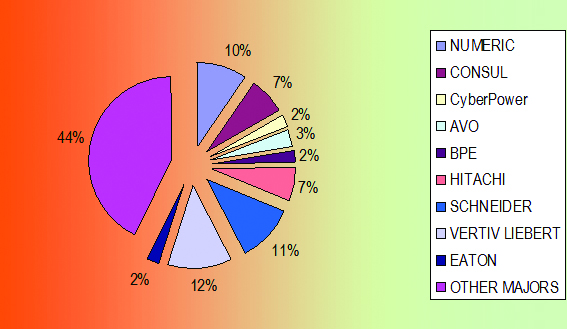
SD FINDINGS
Softdisk went about finding the state of the industry and also how
deep they were actually effected by GST.
The first quarter of the financial year 2019-20 was tragic as
compared to last year. Projects have been few but the demands continue,
There was a bit of lul in he second quarter due GDP & fund flow issues.
In the current fiscal no major projects came up during that period.
The
overall effect is putting expansion plans on hold. However things will
improve in third quarter with government taking lots of
measures and
investing a lot of infrastructure. Growth for big IT, ITES & TELCOM
segment even during recessionary trend continued its positive trend for
tower infrastructure. This has kept mid segment market for UPS going
well (up-to 200KVA). A small power data center with power requirement of
20, 60 to 200KVA rating are also going as per plans. Softdisk believes
that more and more people are moving towards Solar. Some have even
manufactured and installed Grid Sharing Solar UPS, with hybrid charge
facility (Photovoltaic & Mains).
With consolidation being the mantra for Industry. Consul being
acquired by Fuji Japan, one can say the entire Online UPS market can be
divided into following APC-Schneider, Vertiv-Liebert, Legrand-Numeric,
Hitachi-Hirel, Fuji-Consul, AVO, Eaton, CyberPower, BPE & Other major
players BPE, Socomec, Power One, Techser, Uniline & Hykon & the
rest.
Talking of market share Vertiv Emerson has the highest market share
of 12.00% followed closely by APC SCHNEIDER 11.00% Numeric
10.00%
followed by Hitachi 7.00% , Consul 7.00%, AVO 3.00%, Eaton 2.00
& so on
as shown in graph above. While other major players account for
rest.
SD ESTIMATES
Softdisk had predicted in June 2018 that the total industry revenue
will touch INR 6600 crore mark by March, 2019 We talked to Industry
Captains trying to know what the Industry leaders thought. Many had
little or no doubt to what Softdisk has predicted earlier, even though
this response was at time when the global economies were trying to come
out of worst ever economic crises, and Indian market was also undergoing
GST implementation Impact. As on date we feel that nearing
6730.54
crore mark for end-user sales and 6980.54 crore mark
including
secondary sales was quiet a close prediction. Softdisk remains committed
to transparent reporting, in-depth analysis and always throwing up
forecast & estimates which you can Rely Upon.
We have Faith, You Rely on
us,
We Rely on facts..
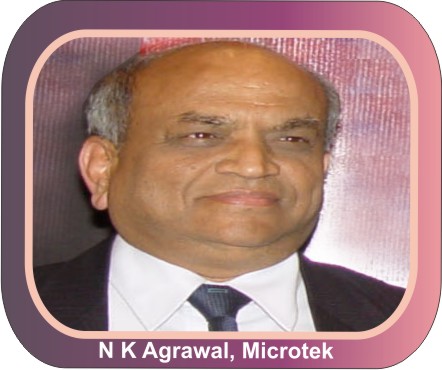 According to Mr. N K Agrawal of Delhi based Microtek in
2018-19
market have remained steady. The overall market for UPS and SPCUs is
still a growing market. Despite being the power situation improving,
still demand for power backup solutions is growing. Specially for Solar
PCUs the market is expanding exponentially, as the prices of Solar
Panels have dropped a Lot and the units are now becoming more
affordable. The government is also promoting renewable solar energy and
providing subsidy also at various places. The consumers are also
becoming more aware and they understand that by one time investment on
solar PCUs, in the long run they are going to save lot of money in
electricity bills. This financial year the economy world over is moving
under the shadow of fear of major recession in US trade war with
China,
depreciation of Chinese currency & falling rupee has made the market
slowdown further, it will not impact Indian markets but spillover effect
is showing its sign the falling rupee is one such sign. In-spite of all
this we still feel that the UPS Segment will show a growth in this year
also all though very low, he laments. According to Mr. N K Agrawal of Delhi based Microtek in
2018-19
market have remained steady. The overall market for UPS and SPCUs is
still a growing market. Despite being the power situation improving,
still demand for power backup solutions is growing. Specially for Solar
PCUs the market is expanding exponentially, as the prices of Solar
Panels have dropped a Lot and the units are now becoming more
affordable. The government is also promoting renewable solar energy and
providing subsidy also at various places. The consumers are also
becoming more aware and they understand that by one time investment on
solar PCUs, in the long run they are going to save lot of money in
electricity bills. This financial year the economy world over is moving
under the shadow of fear of major recession in US trade war with
China,
depreciation of Chinese currency & falling rupee has made the market
slowdown further, it will not impact Indian markets but spillover effect
is showing its sign the falling rupee is one such sign. In-spite of all
this we still feel that the UPS Segment will show a growth in this year
also all though very low, he laments.
GST has impacted the economy initially, but with time the effect
is
eliminating. In today's global business environment the acquisitions and
takeovers will keep happening depending on the requirement and
aspirations of acquirer company.
(Here it is worth mentioning that Softdisk figure does not include
the revenue generated by Inverters, which too is effected by the slow
down.)
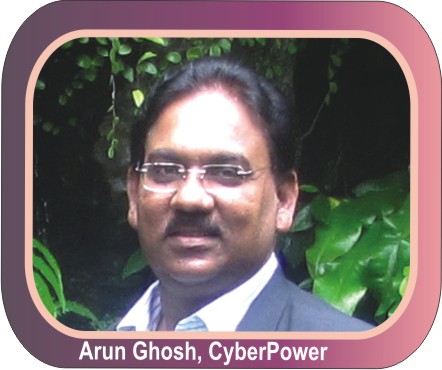 According to Mr. Arun Ghosh of Cyber Power, MD, Cyber
Power, The
Indian UPS market is highly competitive, fragmented and fast growing,
with both multinational and Indian suppliers competing for space. The
demand for UPS system going up has significantly led to a drop-in price.
There are many upcoming products and market is flooding with variety of
products for different applications. According to Mr. Arun Ghosh of Cyber Power, MD, Cyber
Power, The
Indian UPS market is highly competitive, fragmented and fast growing,
with both multinational and Indian suppliers competing for space. The
demand for UPS system going up has significantly led to a drop-in price.
There are many upcoming products and market is flooding with variety of
products for different applications.
Not to deny the fact that India faces an acute power shortage even
today. The scares of frequent Power cuts have compelled homes,
organizations and industries to depend more and more on power back-up
devices. UPS has become a need-base product today and people have
started buying UPS and Inverters anticipating power cuts as nothing
before. Inadequate power generation, issues with land acquisition for
new power plants, fuel shortage, and high transmission and distribution
losses are some of the contributors to this situation. The
computerization initiatives taken by the Central and state governments
besides the public sector undertakings, are among the major factors
driving the UPS market. The SME segment is also showing a growth trend
and will fuel the demand for UPS systems in the coming years.
CyberPower has an award-winning engineering team that meticulously
designs and engineers every product to provide outstanding performance,
as well as surpass international safety and environmental standards.
Company owned factories produce each product to exact specifications for
complete customer satisfaction.
In response to the growing demand for Green IT products, CyberPower
is dedicated to the development of efficient GreenPower UPS
Energy-Saving Technology. As an industry-leading UPS manufacturer,
CyberPower has not only made it dream-come-true for businesses and
individuals implementing Green IT principles but adopted green practices
throughout the operation, including the full compliance to the
Restriction on Hazardous Substances (RoHS), accordance with Waste
Electrical and Electronic Equipment (WEEE) protocols, certification of
ENERGY STAR, receiving ISO 14001 Environmental Management Systems
and IECQ QC 080000 HSPM Hazardous Substance Process Management Standards and
other ongoing "Greening" of all packaging practices and materials
to
ensure the maximum contribution to the environment.
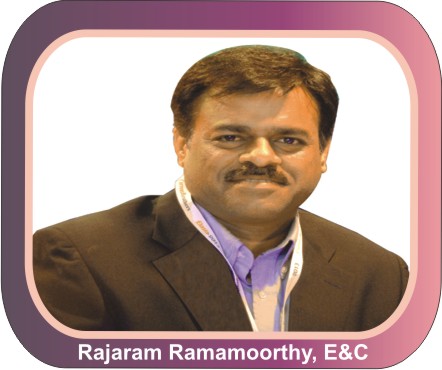 Contrasting views were expressed by Mr.
Rajaram, MD Electronics &
Controls Pvt. Ltd., Bangalore according to him the overall market has
been down since the last 18 months. There is no buoyancy in the market
and customers have started taking it slow. There is no liquidity and the
payment cycles are long drawn. The consolidation in the Banking Industry
has an impact on the purchase of UPS products as there are surplus UPS
due to consolidation of Bank branches & closure of ATMs. Government
purchase through GEM has led to many prominent UPS players exit the
Government business due to unsustainable prices & process adopted by
the
Government and is being flooded by less prominent or regional / smaller
dealers. This leaving the genuine government buyer high and dry. Contrasting views were expressed by Mr.
Rajaram, MD Electronics &
Controls Pvt. Ltd., Bangalore according to him the overall market has
been down since the last 18 months. There is no buoyancy in the market
and customers have started taking it slow. There is no liquidity and the
payment cycles are long drawn. The consolidation in the Banking Industry
has an impact on the purchase of UPS products as there are surplus UPS
due to consolidation of Bank branches & closure of ATMs. Government
purchase through GEM has led to many prominent UPS players exit the
Government business due to unsustainable prices & process adopted by
the
Government and is being flooded by less prominent or regional / smaller
dealers. This leaving the genuine government buyer high and dry.
GST has been a good reform and that has removed the operational
bottlenecks -Road Permits, Form C, multiple taxes etc. However, the
rollout has had its share of issues and there has been a significant
slow down in the business as considerable amount of time has been taken
by all organizations to implement the changes. The reduced business in
the immediate several months has led to losses for some of the
businesses. Smaller suppliers in the bottom of the supply chain has
suffered the most as they had to spend quite some of their resources to
come online. The tax slabs have been very high at 18% and 28% for most
of the capital goods. There is quite some confusion on the rates of GST
for UPS for which an application to review the GST is pending with the
council.
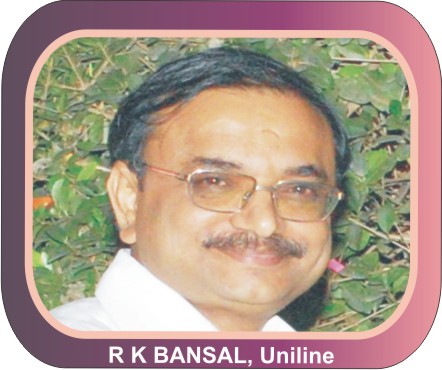 R K Bansal Managing Director Uniline Energy Systems
Pvt. Ltd.
elaborated on this issue, according to him when we speak about market,
we have an enterprise market segment in mind. Most of the top notch UPS
companies like Vertiv, APC, Eaton, Numeric etc to some extent mostly
serve this business segment. Our strength lies in Govt. sector & PSUs.
As per our understanding, the market segment revenue (excluding
precision A/C, Electrical distribution, etc.) for UPS Systems is close
to INR 4500 Cr. Looking at the present market scenario, the revenue
collection from this segment shall be within INR 5000 to 5500 Crore in
the current fiscal this year. We had a tough time in last two fiscal,
however things improved in later part of last fiscal. This current year
has been very good, The expansion plans put on hold by most of the
big
names in IT, ITES companies have started. Even the aggressive companies
in IT infrastructure segment are no exception. There is more emphasis on
best utilization of existing IT facilities and also human resource. Even
the Data Centers projects in telecom segment earlier put on hold have
started giving orders. Governments buying has also gone up as many
a
governments projects have been put on hold have restarted. R K Bansal Managing Director Uniline Energy Systems
Pvt. Ltd.
elaborated on this issue, according to him when we speak about market,
we have an enterprise market segment in mind. Most of the top notch UPS
companies like Vertiv, APC, Eaton, Numeric etc to some extent mostly
serve this business segment. Our strength lies in Govt. sector & PSUs.
As per our understanding, the market segment revenue (excluding
precision A/C, Electrical distribution, etc.) for UPS Systems is close
to INR 4500 Cr. Looking at the present market scenario, the revenue
collection from this segment shall be within INR 5000 to 5500 Crore in
the current fiscal this year. We had a tough time in last two fiscal,
however things improved in later part of last fiscal. This current year
has been very good, The expansion plans put on hold by most of the
big
names in IT, ITES companies have started. Even the aggressive companies
in IT infrastructure segment are no exception. There is more emphasis on
best utilization of existing IT facilities and also human resource. Even
the Data Centers projects in telecom segment earlier put on hold have
started giving orders. Governments buying has also gone up as many
a
governments projects have been put on hold have restarted.
Fluctuation in rupee price not only raised import bills but also lead
to volatility affecting their businesses. Due to increase in raw
material cost, depreciating value of Indian Rupee, overall input cost
has increased. Earlier doing business in India was difficult,
major
problem being the red tape in conducting business as the laws of the
land have been inherently quite ambiguous even for Indian Companies and
entrepreneurs. But with the introduction of GST, things have been
simplified. GST subsumed various taxes like Excise, CST, VAT, Service
Tax etc.. and it is good that we have only one tax -GST. It is a year
and after the initial hiccups, there seems to be some order. While
business is done based on GST, the product / services prices have gone
up and there seems to be no coming back on the increased prices of some
commodities / Services. In a way, GST has helped some businesses to
increase their basic prices.
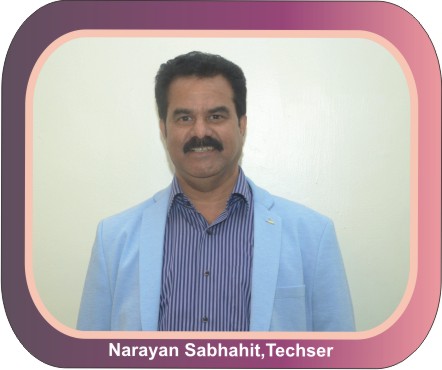 Mr. Narayan Sabhahit Managing Director,
Techser Power Systems Pvt.
Ltd, Bangalore, believes that the financial year 2018-19 was a stead ,
not much growth was witnessed but companies were able to met their
previous revenues. Techser during the later part of the year consciously
decided to avoid any 'cut-throat' competition paradigm. We diligently
decided that it is better to work on healthy orders rather that 'vanity
orders' which could only boost top-line but adversely affecting
bottom-line. The year also has been a year of consolidation with respect
to our restructuring manufacturing and services offerings. We tried to
strengthen our work force wherever required so that we can bounce back
as the market became steadier. Some of the major forecasted orders
previous year did not materialize as there were unprecedented delays in
decision process. They spilled over to this financial year. This
reflected on our top-line during last year sales and boosted our first
quarter sales in 2018-19. Hopefully we will be able to realize those
trends in the current fiscal. Our Indigenous drive is showing results
both in new market and service domain. We have launched Tech Glare
product successfully and geared up production. According to him
"Today
the development process in every vertical is witnessing a speedy growth
in the rural areas. Interpretation of word ‘development' in its correct
form, has been taken seriously by the concerned agencies / authorities.
These are the areas where continuity of power is very essential, since
these companies are facing the Global Challenges. Advent of GST has been
very good but there are certain implemental flaws. Mr. Narayan Sabhahit Managing Director,
Techser Power Systems Pvt.
Ltd, Bangalore, believes that the financial year 2018-19 was a stead ,
not much growth was witnessed but companies were able to met their
previous revenues. Techser during the later part of the year consciously
decided to avoid any 'cut-throat' competition paradigm. We diligently
decided that it is better to work on healthy orders rather that 'vanity
orders' which could only boost top-line but adversely affecting
bottom-line. The year also has been a year of consolidation with respect
to our restructuring manufacturing and services offerings. We tried to
strengthen our work force wherever required so that we can bounce back
as the market became steadier. Some of the major forecasted orders
previous year did not materialize as there were unprecedented delays in
decision process. They spilled over to this financial year. This
reflected on our top-line during last year sales and boosted our first
quarter sales in 2018-19. Hopefully we will be able to realize those
trends in the current fiscal. Our Indigenous drive is showing results
both in new market and service domain. We have launched Tech Glare
product successfully and geared up production. According to him
"Today
the development process in every vertical is witnessing a speedy growth
in the rural areas. Interpretation of word ‘development' in its correct
form, has been taken seriously by the concerned agencies / authorities.
These are the areas where continuity of power is very essential, since
these companies are facing the Global Challenges. Advent of GST has been
very good but there are certain implemental flaws.
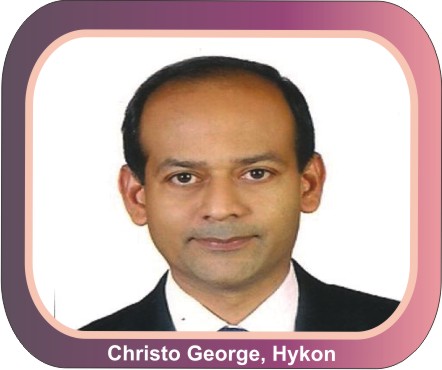 According to Mr. Christo George of Hykon India Limited.
Thrissur The
UPS market is not growing as expected. The banks and many other
institutions had stopped purchasing UPS as they moved to laptops from
Desk tops. Also the small UPS segment which used to go mainly to home
segments will vanish soon as there also Laptops are taking over. The
industrial UPS market will go up as many equipment in industries now
need UPS. But the current year as there is a slowdown in Industry, the
requirement of UPS also came down. According to Mr. Christo George of Hykon India Limited.
Thrissur The
UPS market is not growing as expected. The banks and many other
institutions had stopped purchasing UPS as they moved to laptops from
Desk tops. Also the small UPS segment which used to go mainly to home
segments will vanish soon as there also Laptops are taking over. The
industrial UPS market will go up as many equipment in industries now
need UPS. But the current year as there is a slowdown in Industry, the
requirement of UPS also came down.
Solar UPS segment will grow as that segment is growing fast. In SPCUs
India companies only most SME's are manufacturing off-grid PCUs. There
is a good growth for SPCUs in home segments. That will affect the growth
of inverter segment as it become Solar Home UPS.
GST is good for the industries as the taxation becomes a standard
throughout the country.
GST is good for the industries as the taxation becomes a standard
throughout the country. But taking separate registration in each state
takes away the Ease-of- doing business. Another hurdle is getting back
the refund of GST. As it's taking long time, it affect the working
capital and fund flow. The Business model for UPS is changing and many
companies have to switch over to other areas like Solar Electric
Charging stations and Lithium Ion battery packs. So more acquisitions
will happen in the coming years.
Lithium batteries is a Disruptive Technology which will disrupt the
conventional Lead acid batteries. The cost of Li-Ion batteries are
coming down and it will be at par with the LA in the next two years.
Against the common belief Lithium ion batteries are not having any
poisonous or hazardous materials or contents like in LA batteries. So
there is no need for any concerns in recycling like in the case of LA
batteries. 95% of the Li Ion batteries contents are -Aluminum & Copper
which can be easily recycled. 2-3% of Lithium also is recyclable.
Make in India Campaign will give a boost to the manufacturing set ups
in India. One advantage in future is that the cost of production in
China will be going up. Once the scale of operations of Indian companies
go up, Indian companies can compete with Chinese Companies.
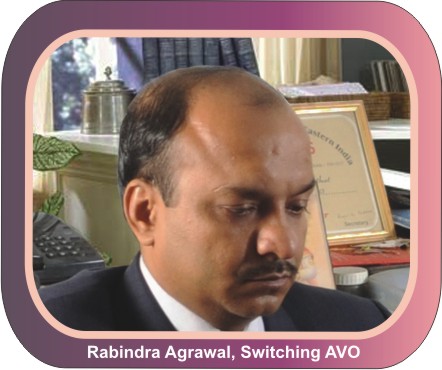 Shri Rabindra Agrawal of Kolkata based
Switching AVO Electro Power
Ltd., also believes that there is lot of good that has been brought in
by GST however tax rates for large backup systems are still point of
concern. The introduction of the Mixed Supply and Composite Supply has
led to a lot of doubts in the way that Products like UPS, which have a
battery component in it being interpreted as per the new definitions of
Mixed & Composite Supply. Since there is a tax difference between the
UPS Product and Battery (when sold alone), there could be a big tax
impact in case the interpretation is done wrongly as a Mixed Supply
instead of the Composite Supply. There is a widespread opinion in the
minds of the manufacturers, that what case laws based on legal
judgements has been applied in the excise regime is applicable in the
GST regime as well. He also believes that in Reverse auction there is an
urge to become L-1 even if it is at the cost of going down on Bill of
Materials. So all of us must be alert and not bring down prices, just
for the top line. We must mature to the level of ensuring that we don't
cut each other's legs. He further adds that the market has been
customer driven and price plays a decisive role in most cases. Can we
find a way out for UPS Manufacturers staying away from such auctions?
Can Customers be explained the de-merits of reverse auction and the gain
they will have in normal tendering process. Yes, this is a must. The UPS
and battery suppliers should boycott reverse auctions. The battery
suppliers must not undercut the UPS OEMs and go direct to the same
customers that UPS OEMs helped develop for the battery suppliers. The
UPS industry needs a complete make-over. All manufacturers must get
together and have a common voice on this. There is enough scope in the
market for or everyone to grow. Shri Rabindra Agrawal of Kolkata based
Switching AVO Electro Power
Ltd., also believes that there is lot of good that has been brought in
by GST however tax rates for large backup systems are still point of
concern. The introduction of the Mixed Supply and Composite Supply has
led to a lot of doubts in the way that Products like UPS, which have a
battery component in it being interpreted as per the new definitions of
Mixed & Composite Supply. Since there is a tax difference between the
UPS Product and Battery (when sold alone), there could be a big tax
impact in case the interpretation is done wrongly as a Mixed Supply
instead of the Composite Supply. There is a widespread opinion in the
minds of the manufacturers, that what case laws based on legal
judgements has been applied in the excise regime is applicable in the
GST regime as well. He also believes that in Reverse auction there is an
urge to become L-1 even if it is at the cost of going down on Bill of
Materials. So all of us must be alert and not bring down prices, just
for the top line. We must mature to the level of ensuring that we don't
cut each other's legs. He further adds that the market has been
customer driven and price plays a decisive role in most cases. Can we
find a way out for UPS Manufacturers staying away from such auctions?
Can Customers be explained the de-merits of reverse auction and the gain
they will have in normal tendering process. Yes, this is a must. The UPS
and battery suppliers should boycott reverse auctions. The battery
suppliers must not undercut the UPS OEMs and go direct to the same
customers that UPS OEMs helped develop for the battery suppliers. The
UPS industry needs a complete make-over. All manufacturers must get
together and have a common voice on this. There is enough scope in the
market for or everyone to grow.
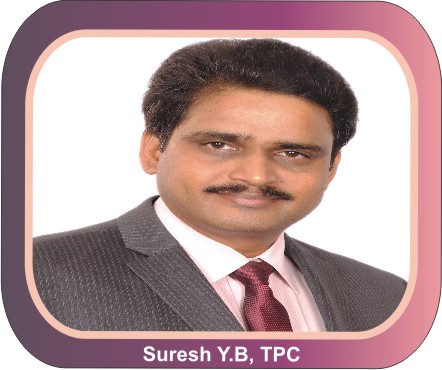 According to Mr. Y B Suresh of TPC Smaller players are
finding it
difficult to access to new customer and volume based order because of
the big players are coming out with very competitive price and products
ranges. That is the reason that most of the small and medium range UPS
manufacturers are now moving towards SPCUs and in even commissioning
small sized Off Grid, Hybrid and Grid tie Solar Power Plants. Earlier
banks used to be priority customers but now with reverse auction we are
out of it. So, Small player should focus on providing effective service
support to retain their existing and grow in their reference market and
focus on providing complete solution to customers and focus much on
related products requirement in existing customer base. According to Mr. Y B Suresh of TPC Smaller players are
finding it
difficult to access to new customer and volume based order because of
the big players are coming out with very competitive price and products
ranges. That is the reason that most of the small and medium range UPS
manufacturers are now moving towards SPCUs and in even commissioning
small sized Off Grid, Hybrid and Grid tie Solar Power Plants. Earlier
banks used to be priority customers but now with reverse auction we are
out of it. So, Small player should focus on providing effective service
support to retain their existing and grow in their reference market and
focus on providing complete solution to customers and focus much on
related products requirement in existing customer base.
Softdisk believes that All said and done, simple way out for UPS
companies to avoid getting squeezed by customers is to boycott all
reverse auction. which they don't do in the fear of getting
blacklisted.
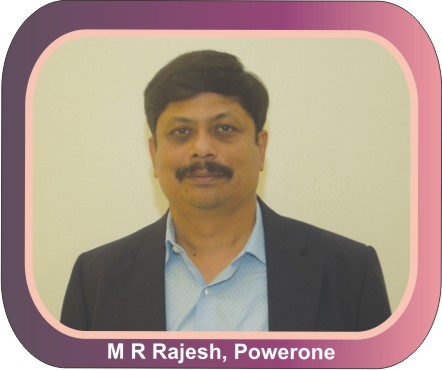 Mr. I B Rao & Mr. M R Rajesh of Power One Micro
Systems Pvt. Ltd.
welcomed the implementation of GST. Today Indian power conditioning
market is getting more sensitive and mature to the evolving needs of the
businesses. With India assuming a key role in the world economy,
businesses have become attuned to the fact that they need to be robust
in terms of infrastructure to attract and retain investors. Hence,
Business Critical Continuity is being viewed strategically and upcoming
businesses are realizing the importance of factoring and aligning it as
key component in the overall business model. Mr. I B Rao & Mr. M R Rajesh of Power One Micro
Systems Pvt. Ltd.
welcomed the implementation of GST. Today Indian power conditioning
market is getting more sensitive and mature to the evolving needs of the
businesses. With India assuming a key role in the world economy,
businesses have become attuned to the fact that they need to be robust
in terms of infrastructure to attract and retain investors. Hence,
Business Critical Continuity is being viewed strategically and upcoming
businesses are realizing the importance of factoring and aligning it as
key component in the overall business model.
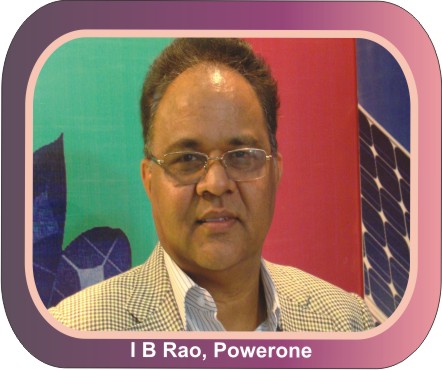 Adding further they say we view the present market
scenario as an
opportunity to strengthen our company's presence in Industrial &
Government market segment. Adding further they say we view the present market
scenario as an
opportunity to strengthen our company's presence in Industrial &
Government market segment.
Extremely low prices are unsustainable if quality/service levels are
to be maintained. Price erosion beyond a point hurts all stake holders
-manufacturers, channel partners, customers, etc. If it continues
beyond a point it will lead to disastrous consequences for vendors. We
have taken a wise decision not to take up orders were we have to cut
down on margins this allowed to expand our product basket to SPCUs, and
complete solar power installation where we are successful to a great
extent and the results are showing.
Growth in the economy will lead to the growth and increase in IT
spends of vertical like IT, ITES, manufacturing, BFSI and Government.
There by leading to the increased demand for the UPS systems in these
vertical.
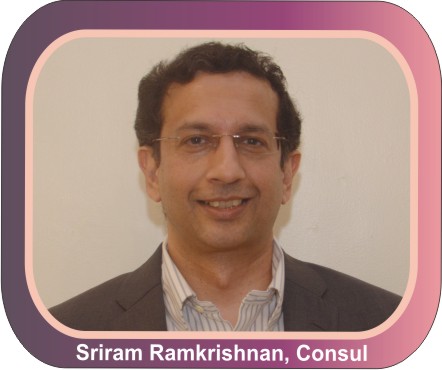 According to Mr. Sriram Ramkrishnan CEO of
Consul Neowatt Power
Solutions Pvt. Ltd. believes that Now that the 2nd year anniversary
has
passed after GST implementation started, we do not see any major issues
with GSTN. While there were a number of challenges for a few months
after GST started when GSTN was not open for filings for many days in a
month, those issues appear to be behind us now. The government
should
simplify the GST to a fewer number of slabs and the UPS should to at a
12% slab from current 18% GST slab. This reduction in GST rate for UPS
is well justified as today UPS is a necessity for uninterrupted business
operation and is a critical product required for increasing productivity
of Indian businesses and for efficient operations of government
priorities like Smart Cities, Airports, Metros, Railways and Hospitals.
This will reduce unnecessary burden on customers whose services or
output is charged at lower GST slab than 18% and also for customers in
segments like Hospitals who cannot take an input credit on their capital
purchases like UPS. Further UPS and Battery should also be at the same
GST slab as the battery is integral for the UPS to serve its intended
purpose of providing uninterrupted power to the connected loads.
Currently battery is under the 28% slab and UPS is under 18% slab. This
has caused certain challenges when some customers purchase UPS with
backup (i.e inclusive of batteries) @18% slab while other customers want
to purchase UPS without backup @18% slab and batteries separately @28%
slab. According to Mr. Sriram Ramkrishnan CEO of
Consul Neowatt Power
Solutions Pvt. Ltd. believes that Now that the 2nd year anniversary
has
passed after GST implementation started, we do not see any major issues
with GSTN. While there were a number of challenges for a few months
after GST started when GSTN was not open for filings for many days in a
month, those issues appear to be behind us now. The government
should
simplify the GST to a fewer number of slabs and the UPS should to at a
12% slab from current 18% GST slab. This reduction in GST rate for UPS
is well justified as today UPS is a necessity for uninterrupted business
operation and is a critical product required for increasing productivity
of Indian businesses and for efficient operations of government
priorities like Smart Cities, Airports, Metros, Railways and Hospitals.
This will reduce unnecessary burden on customers whose services or
output is charged at lower GST slab than 18% and also for customers in
segments like Hospitals who cannot take an input credit on their capital
purchases like UPS. Further UPS and Battery should also be at the same
GST slab as the battery is integral for the UPS to serve its intended
purpose of providing uninterrupted power to the connected loads.
Currently battery is under the 28% slab and UPS is under 18% slab. This
has caused certain challenges when some customers purchase UPS with
backup (i.e inclusive of batteries) @18% slab while other customers want
to purchase UPS without backup @18% slab and batteries separately @28%
slab.
The margin pressure is real in a mature market with a number of UPS
suppliers competing fiercely for market share. I see this as a challenge
which we have to face and this should drive innovation and efficiency to
benefit the customer. Ultimately, UPS suppliers who can meet market
price levels without compromising quality will win market share. This
has been our mantra and we have focused our R&D to develop UPS
products
that meets customer requirements on price, performance and quality. But
I will add that the price levels we see in many government
tenders
mean that the successful UPS vendor will have to live with very low
margins or even incur a loss for the sake of top line. In this context,
we decided to not participate in PSU, BFSI business about two years back
because we realized that we were unable to meet the price levels we saw
in these tenders. In this context, government can look to classify
vendors in 3 categories based on their capabilities - technical ,
financial & service strengths. Depending on the project size and scope,
participation can be restricted to vendors who meet the minimum
criteria. This will help ensure we can avoid unrealistic pricing seen
today in government tenders and also allow all UPS vendors to get a
share of the available government business without compromising on
margins or quality.
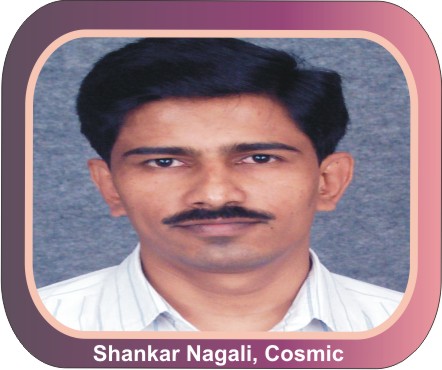 According to Mr. Shankar C Nagali of Managing Director of
Cosmic
Micro Systems, With the growing business complexities and GST law
evolving in India, it is essential to understand the implications of GST
on the Mergers and Acquisition transactions in India. GST, it was widely
feared, would cause inflation to rise, as with many countries that
launched a single tax regime. That hasn't happened in India. The recent
spike in consumer inflation has been due to high food and fuel prices,
unrelated to GST. Past few years, there had been a lot of changes made
in the Indian Economy. But we also need to change the way we look at our
economy. There are a lot of things we don't measure well. GST is a
game-changing reform for the Indian Economy, as it will bring the net
appropriate price of the goods and services. According to Mr. Shankar C Nagali of Managing Director of
Cosmic
Micro Systems, With the growing business complexities and GST law
evolving in India, it is essential to understand the implications of GST
on the Mergers and Acquisition transactions in India. GST, it was widely
feared, would cause inflation to rise, as with many countries that
launched a single tax regime. That hasn't happened in India. The recent
spike in consumer inflation has been due to high food and fuel prices,
unrelated to GST. Past few years, there had been a lot of changes made
in the Indian Economy. But we also need to change the way we look at our
economy. There are a lot of things we don't measure well. GST is a
game-changing reform for the Indian Economy, as it will bring the net
appropriate price of the goods and services.
From the viewpoint of the consumer, they would now have paid more
tax
for most of the goods and services they consume. Most everyday
consumables now draw the same or a slightly higher rate of tax.
Furthermore, the GST implementation has a cost of compliance attached to
it. It seems that this cost of compliance will be prohibitive and high
for the small-scale manufacturers and traders, who have also protested
the same. They may end up pricing their goods at higher rates.
As many taxes and multiple cesses were subsumed into GST, aligning
India with global regimes. Central taxes such as excise duty, services
tax, countervailing duty and state taxes including value added tax,
Octroi and purchase tax were all rolled into one. The new regime
provided for free flow of tax credits and did away with cascading due to
tax on tax, boosting company financials and resulting in reduced prices
for consumers. It also ensured a single law for the whole country with
uniform procedures and rules, which reduces compliance burden and
business complexity. The government sacrificed revenues, but improved
compliance should cover any gap.
 According to Mr. Vinod of Arvi Systems and controls,
India's GDP
growth despite slowdown is currently hovering around 6 percent mark
which gives us an indication of the industrial expansion that is already
started happening under this regime. The rigidity of the Indian economy
was reflected during global meltdown. GST implementation has eased out
taxation difficulties to great extent. According to Mr. Vinod of Arvi Systems and controls,
India's GDP
growth despite slowdown is currently hovering around 6 percent mark
which gives us an indication of the industrial expansion that is already
started happening under this regime. The rigidity of the Indian economy
was reflected during global meltdown. GST implementation has eased out
taxation difficulties to great extent.
As UPS category rate in an economy that is already the world's fourth
largest in real terms (Purchasing Power Parity) is expected to grow the
faster then any other country barring China. The key factors for India's
growth in the UPS market are would be:
- With customers moving towards Desktops for industrial &
larger
applications and Government putting in lot of fund for
infrastructure growth.
- Increase Server sales will result in increased demand for UPS,
which is not happening at the required pace right now but is certain
to happen with the latest financial infusion and Govt. declaring
75000 lakh crores for infrastructure development.
- Increase penetration in C & D class cities has been the
reason
for the growth in the UPS market.
- Growth in the economy will lead to the growth and increase in IT
spends of vertical like IT, ITES, manufacturing, BFSI and
Government. There by leading to the increased demand for the UPS
systems in these vertical.
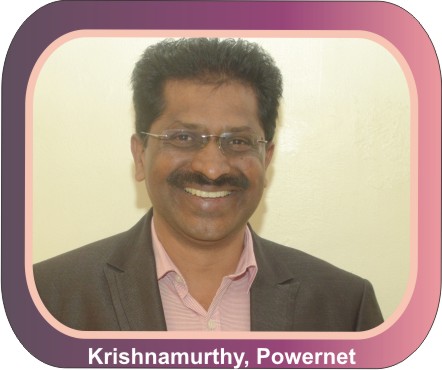 Mr. Krishnamoorthy , MD Powernet Solutions Pvt.
Ltd. says innovation
is the key to success of any manufacturer, It cannot be run of the mill
specially in this era of fierce competition and squeezing margins,
Along with regular UPS and SPCUs. Mr. Krishnamoorthy , MD Powernet Solutions Pvt.
Ltd. says innovation
is the key to success of any manufacturer, It cannot be run of the mill
specially in this era of fierce competition and squeezing margins,
Along with regular UPS and SPCUs.
We have started manufacturing Lift UPS with logic boards, so that no
life is truck in between floors. We have become OEMs to many a
established brands in a short span of time and are expected to do much
better in coming years.
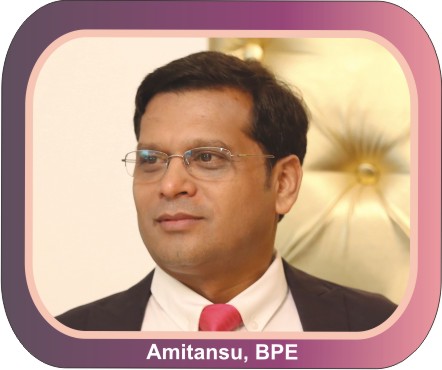 According to Amitansu Satpathy, MD, Best
Power Equipments India Pvt
Ltd., today Indian power conditioning market is getting more sensitive
and mature where they are concerned on space saving energy consumption
&
efficient quality service to the evolving needs of the businesses. With
India assuming a key role in the Asian economy, businesses have become
attuned to the fact that they need to be robust in terms of
infrastructure to attract and retain investors. Hence, Business Critical
Continuity is being viewed strategically and upcoming businesses are
realizing the importance of factoring and aligning it as key component
in the overall business model. Adding further he says we view the
present market scenario as an opportunity to strengthen our company's
presence in various market segment. Extremely low prices are
unsustainable if quality/service levels are to be maintained. Price
erosion beyond a point hurts all stake holders -manufacturers, channel
partners, customers, etc. If it continues beyond a point it will lead to
disastrous consequences for vendors. We have taken a careful decision
not to take up orders were we have to cut down on margins this has lead
to increased profitability where we are successful to a great extent and
the results are showing. This new GSTN system of taxation though is very
useful but still commenting before complete implementation, GST Audit
etc will be pre-mature, however movement of goods to various part of the
country has been eased a lot, he laments. Best Power Equipments are one
of most innovative and cost effective UPS manufacturers in the
country.
There Modular UPSs are rated to be one of the best in the country. According to Amitansu Satpathy, MD, Best
Power Equipments India Pvt
Ltd., today Indian power conditioning market is getting more sensitive
and mature where they are concerned on space saving energy consumption
&
efficient quality service to the evolving needs of the businesses. With
India assuming a key role in the Asian economy, businesses have become
attuned to the fact that they need to be robust in terms of
infrastructure to attract and retain investors. Hence, Business Critical
Continuity is being viewed strategically and upcoming businesses are
realizing the importance of factoring and aligning it as key component
in the overall business model. Adding further he says we view the
present market scenario as an opportunity to strengthen our company's
presence in various market segment. Extremely low prices are
unsustainable if quality/service levels are to be maintained. Price
erosion beyond a point hurts all stake holders -manufacturers, channel
partners, customers, etc. If it continues beyond a point it will lead to
disastrous consequences for vendors. We have taken a careful decision
not to take up orders were we have to cut down on margins this has lead
to increased profitability where we are successful to a great extent and
the results are showing. This new GSTN system of taxation though is very
useful but still commenting before complete implementation, GST Audit
etc will be pre-mature, however movement of goods to various part of the
country has been eased a lot, he laments. Best Power Equipments are one
of most innovative and cost effective UPS manufacturers in the
country.
There Modular UPSs are rated to be one of the best in the country.
 Since the acquisition of Numeric by Legrand, Numeric
handed over the
brand with a turn over of 651 crores, It has been vacillating between
625 crore to 645 crore. This is fist time since acquisition Numeric has
shown a big jump to 682 crores under the leadership of Mr. Palash
Nandy According to him Softdisk Magazine acts a s a glue to the
industry, and it gives a wide range of information from latest product
news to in-depth articles on power electronic industry and its reviews &
forecasts. The publication has been conducting surveys in the various
segments of Power, Solar & IT Industry and coming up with SD
Awards.
These surveys provide an in-depth analysis of the some segments of the
Industry and users utilize it as one of their decision making tools and
also as a guide of the Industry. Since the acquisition of Numeric by Legrand, Numeric
handed over the
brand with a turn over of 651 crores, It has been vacillating between
625 crore to 645 crore. This is fist time since acquisition Numeric has
shown a big jump to 682 crores under the leadership of Mr. Palash
Nandy According to him Softdisk Magazine acts a s a glue to the
industry, and it gives a wide range of information from latest product
news to in-depth articles on power electronic industry and its reviews &
forecasts. The publication has been conducting surveys in the various
segments of Power, Solar & IT Industry and coming up with SD
Awards.
These surveys provide an in-depth analysis of the some segments of the
Industry and users utilize it as one of their decision making tools and
also as a guide of the Industry.
CONCLUSION :
Softdisk believes the Govt. should realize the importance of Power
Continuity as it is the life line of major GDP contributors. Softdisk
has seen it all over the past two & a half decades, more often then not
some of the companies use a lot of word jugglery in there promos, it
must be the same thing which some one else must be offering without
making lot of noise and at a better price. It is one area where
customers need to be watchful. Softdisk believes that if Manufacturers
mad rush for sale will only decrease their profits and ultimately lead
to their collapse. So UPS business is not rosy and bright but has still
not lost its potential.
|